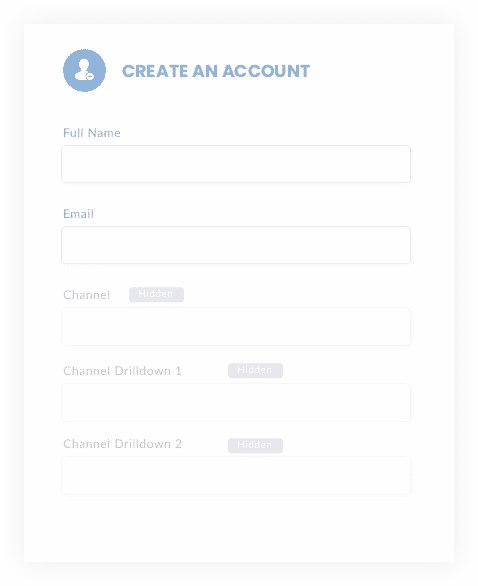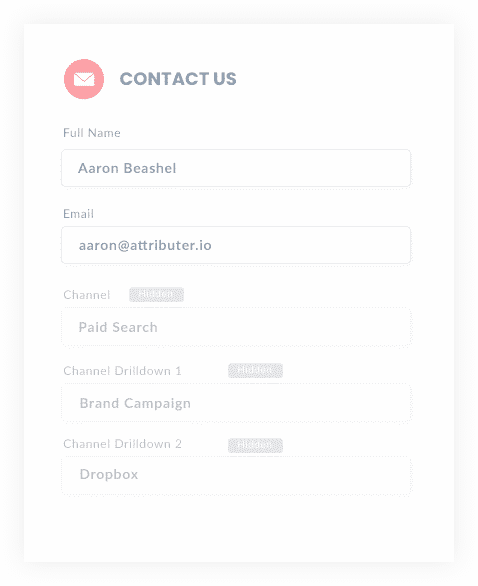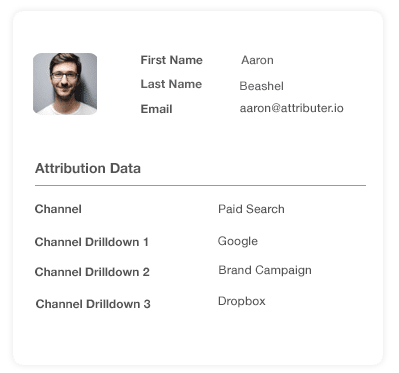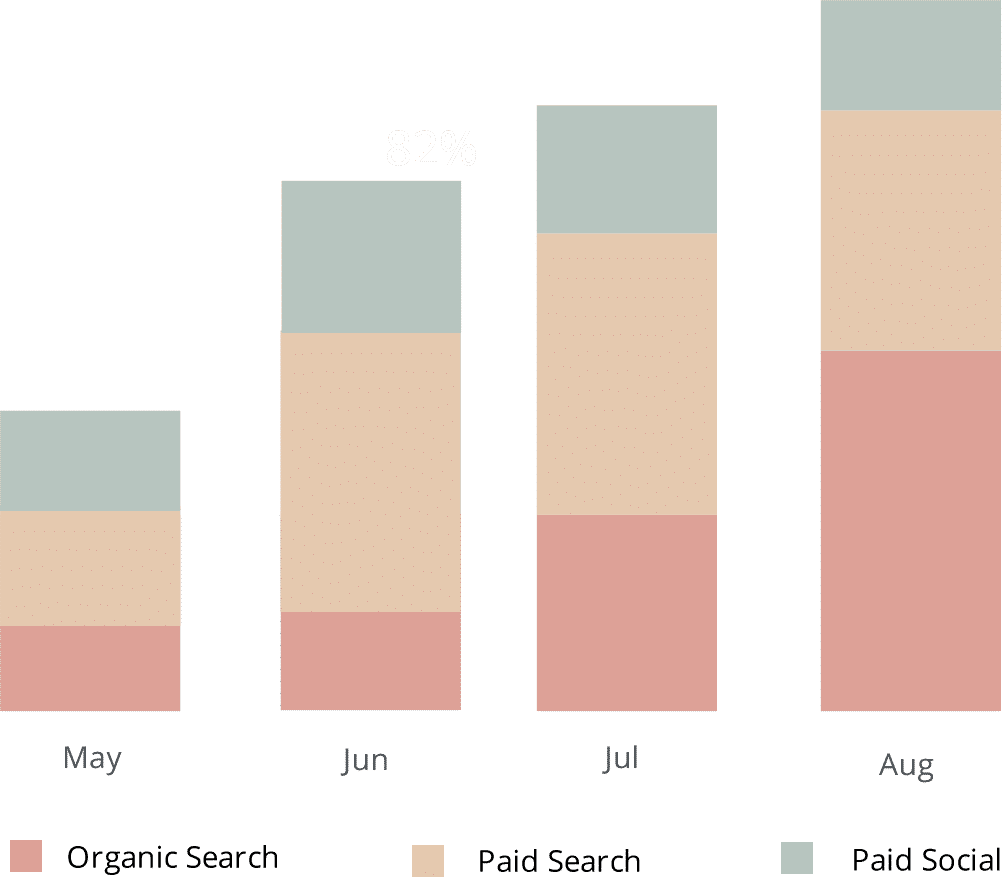Integrate Google Analytics data into Recurly in 4 easy steps
Here's how to easily integrate Google Analytics data, such as channel and landing page information, into Recurly so you can run reports that show you where your signups, customers and revenue are coming from.

Being acquainted with the marketing channels and campaigns responsible for raking in the majority of your revenue, signups, and customers is essential for any business.
Google Analytics is a wonderful tool to inform you which channels deliver visitors. However, it can’t provide insight into which visitors have turned into customers, how much the customers pay you, how frequently they churn, what their lifetime value is, etc.
If you want to get this type of data, Google Analytics data needs to be passed into your billing platforms so you can categorise your revenue reports into channels and campaigns.
Have no idea how to do this? Don't worry, we will walk you through how you can use Attributer to send Google Analytics data into Recurly.
What is Attributer?
Simply put, Attributer is a piece of code you place on your website. Every time a user arrives on your site, Attributer looks at information to figure out where your visitor came from. Attributer then groups each visit according to a series of channels (like paid social, paid search, organic search, etc.) Once categorised into channels, Attributer stores this information in a cookie in the user’s browser.
Whenever a visitor signs up for your product, Attributer sends the channel information and the lead’s details into Recurly.
This marketing attribution data in Recurly can then be used to answer questions like:
- How many customers have I generated from my Google ads?
- What’s the average MRR of customers from my Twitter ads vs. customers from my LinkedIn ads?
- What’s the churn rate of customers from organic Bing searches?
4 steps to integrate Google Analytics data into Recurly
Using Attributer to get Google Analytics data into Recurly is easy. Here's how to do it in 4 easy steps:
1. Add hidden fields to your forms

To begin with, multiple hidden fields need to be added to your sign-up forms. These hidden fields are as follows:
- Channel
- Channel Drilldown 1
- Channel Drildown 2
- Channel Drilldown 3
- Landing Page
- Landing Page Group
Otherwise, you can write a simple piece of javascript to pull the data from the cookie and send it through to Recurly when a user completes a signup form. This can be useful if you have Google or Facebook signup options where a user can create an account without actually completing a form. For more information on this, check out this help article.
2. Attributer automatically fills hidden fields with Google Analytics data

Attributer looks at where your visitors come from and once they complete a form on your website, it populates the hidden fields with Google Analytics data.
As an example, if I was a marketer at Hubspot and a visitor came to my website from a brand campaign in paid search, it would populate the hidden fields as follows (depending on the UTM parameters I used behind my ads):
- Channel = Paid Search
- Channel Drilldown 1 = Google
- Channel Drildown 2 = Brand Campaign
- Channel Drilldown 3 = Hubspot
On top of the information on channel, it would also capture the visitor's first landing page (I.e. hubspot.com/blog/best-cms-software) and the first landing page group (i.e. /blog)
3. Google Analytics data connects with Recurly

Whenever a visitor submits a form on your website, the Google Analytics data stored in the cookie is sent into Recurly along with the visitor’s other data entered in the form (i.e., the lead’s first and last name, email address, contact number, etc.)
4. Run reports to understand which channels are driving leads, customers and revenue

Once your Google Analytics data is in Recurly, you can start building reports that display your different subscription metrics broken down according to the marketing channel and or/campaign where the visitor came through.
These can include:
- New trials added each month by channel or campaign
- Trial to customer conversion rate by channel or campaign
- New customers added each month by channel or campaign
- New MRR added each month by channel or campaign
- New ARR added each month by channel or campaign
- ARPU by channel or campaign
- Lifetime value by channel or campaign
- Customer churn rate by channel or campaign
- MRR churn rate by channel or campaign
What data gets passed into Recurly
At Attributer, we’ve found there are two essential elements for attribution:
- Channel - How did a visitor reach your website? Usually by way of organic search, paid search, paid social, referral, etc.
- Landing page - What part of your site did they find interesting? It could be your features pages, blog, ebooks, etc.
To help you attain answers to these important questions, we have built Attributer.
1. Marketing channel data
Attributer automatically grabs the information on the channel your lead has come from (i.e., paid search, paid social, organic search) along with additional detail on each channel. For example, in paid search, Attributer also captures the campaign, ad group, keyword, etc.
2. Landing page data
Attributer also intuitively captures the first page the lead lands on or sees (i.e., dropbox.com/blog/best-file-storage-tools) as well as the page’s category. For this instance, it’s a blog.
This data is helpful because you can view the performance of related content as a whole and view the performance of more specific content. For example, you will be able to see how many leads your entire blog section has generated and zoom in on each blog post’s performance too. This way, you have information on the ins and outs of your site’s sections.
What you can do with this data
With the Google Analytics data inside Recurly, the following scenarios are possible:
1. Report on channels
With the Google Analytics readily available in Recurly, you can create reports that will aid in answering questions like:
- How many signups did you get from your Google ads?
- What's the signup-to-customer conversion rate of leads from your Twitter ads?
- How many customers have been generated by your LinkedIn ads?
- How much MRR or ARR has been generated by your Facebook ads
- What's the Lifetime Value of customers from your Facebook ads, and how does that compare to other channels?
- What's the overall ROI of your Facebook ads (spend/revenue generated)?
You can build reports in Recurly's native reporting tools, or you can pass the data to your choice of analytics and business intelligence tool that integrates with Recurly to run more comprehensive reports.
2. Report on content
Attributer also gathers data on your visitors’ landing page (and landing page group), so you can run reports that show your site content’s performance.
For instance, you could create reports that provide answers to questions like:
- How many signups did I get from my blog?
- Which blog posts have delivered the most signups?
- Which blog posts are converting people into customers?
- What is the ROI of my blogging efforts?
With this data, you can also view how specific sections on your site perform in terms of conversion rate to customers. So, for example, you will see that while your blog is bringing in plenty of traffic and sign-ups, only a very few are actually converted into customers. Armed with this knowledge, you can then decide whether to continue your blog or allocate your time and resources elsewhere.
Wrap up
Attributer is an excellent tool to help you get Google Analytics data into Recurly.
Attributer is simple to install, and once it’s operational, you can start building detailed reports and dashboards inside Recurly. These reports and dashboards can let you know the performance of your content, campaigns, SEO efforts, and more.
Attributer is free to try! So why not sign up and start your free trial today and see if it fits your needs?
Get Started For Free
Start your 14-day free trial of Attributer today!

About the Author
Aaron Beashel is the founder of Attributer and has over 15 years of experience in marketing & analytics. He is a recognized expert in the subject and has written articles for leading websites such as Hubspot, Zapier, Search Engine Journal, Buffer, Unbounce & more. Learn more about Aaron here.
